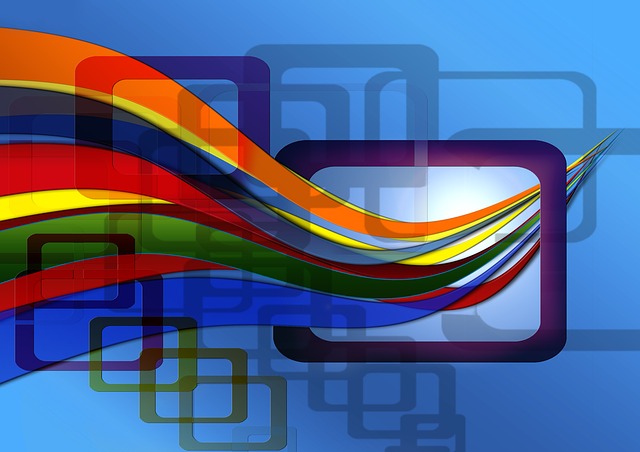The Canadian Intellectual Property Office (www.cipo.ic.gc.ca) is responsible for registering copyrights in Canada, and is part of the Copyright and Industrial Design Branch of CIPO, an agency of Industry Canada. In addition to copyrights, CIPO is responsible for most other intellectual property (IP) rights including patents, trade-marks, industrial designs and integrated circuit topographies.
A poem, painting, musical score, performer’s performance, computer program — all are valuable creations, although perhaps no one can measure their worth. Some may earn a lot of money in the marketplace and others, none at all. Regardless of their merit or commercial value, Canadian law regards all original creative works to be copyright material. This means that if you own the copyright to a poem, song, or other work, you have rights that are protected under the Copyright Act.
Simply put, the Act prohibits others from copying your work without your permission. Its purpose, like that of other pieces of IP legislation, is to protect copyright owners while promoting creativity and the orderly exchange of ideas.
WHAT IS A COPYRIGHT?
In the simplest terms, “copyright” means “the right to copy.” In general, copyright means the sole right to produce or reproduce a work (or a substantial part of it) in any form. It includes the right to perform the work or any substantial part of it, or in the case of a lecture, to deliver it. If the work is unpublished, it includes the right to publish it or any substantial part of it.
WHAT CAN YOU COPYRIGHT?
Copyright applies to all original literary, dramatic, musical and artistic works. Each of these general categories covers a wide range of creations, including:
- literary works: books, pamphlets, poems, other works consisting of text and computer programs;
- dramatic works: films, videos/DVDs, plays, screenplays and scripts;
- musical works: compositions that consist of both words and music, or music only (note that lyrics without music fall into the literary works category); and
- artistic works: paintings, drawings, maps, photographs, sculptures and architectural works.
- As of September 1, 1997, the Copyright Act contained provisions for neighbouring rights, consisting of copyright protection for three categories of works that fall under “other subject matter”:
- performer’s performances: performers such as actors, musicians, dancers and singers have copyrights in their performances;
- sound recordings: makers of recordings, such as records, cassettes, and compact discs (referred to as “sound recordings” in the Copyright Act), are also protected by copyright; and
- communication signals: broadcasters have copyrights in the communication signals that are broadcast.
Separate copyrights may exist within one work. For example, a musical work may consist of the song and the device that contains the song (e.g., a compact disc, etc.); in this instance, the song and the device are considered two different works and may be protected by copyright as a musical work and sound recording respectively. In addition, the live performance of this song by an artist may also be captured and registered separately as a performer’s performance.
WHAT CANNOT YOU COPYRIGHT?
The following cannot be copyrighted:
- titles and short word combinations;
- ideas: copyright is restricted to the expression in a fixed manner (e.g., text, recording, drawing, etc.) of an idea, not the idea itself;
- names or slogans;
- methods (e.g., a method of teaching or sculpting, etc.);
- plots or characters; and
- factual information: facts, ideas and news are all considered part of the public domain, that is, they are everyone’s property, and one cannot hold copyright in them; although for layout, adaptations and translations of factual information, for example, it is the expression of the information that is protected and not the facts.
In the case of a magazine article including factual information, it is the expression of the information that is protected, and not the facts.
Facts, ideas and news are all considered part of the public domain, that is, they are everyone’s property.
Note too, that you cannot hold a copyright for a work that is in the public domain. You can adapt or translate such a work and have a copyright for your adaptation or translation.
BENEFITS OF REGISTRATION
Although you don’t have to register your copyright to have protection in Canada, a certificate of registration is evidence that your work is protected by copyright and that you, the person registered, are the owner.
Registration, however, is no guarantee against infringement. The Copyright Office is not responsible for policing, or checking on registered works and their use, and will not guarantee that the legitimacy of ownership or originality in a work will never be questioned.
How Long Do Copyrights Last?
The general rule is that copyright lasts for the life of the author, the remainder of the calendar year in which the author dies, and for 50 years following the end of that calendar year. Therefore, protection will expire on December 31 of the 50th year after the author dies. After that, the work becomes part of the public domain and anyone can use it.
Some exceptions to the general rule are discussed below. Note that these exceptions are not all encompassing, and any issues where clarification of ownership is required should be resolved with the help of legal professionals.
What to Consider Before Filing an Application
The Copyright Office will give you the basic information you need to file your own application for copyright registration; however, the Office cannot prepare your application, interpret the Copyright Act for you or counsel you in any matters other than registration or the use of Office records. For legal advice, you should consult a legal professional with knowledge in the field.
Searching
The records of the Copyright Office may be searched for information such as copyright owners’ names and changes to ownership. The Canadian Copyrights Database on the CIPO website (www.cipo.ic.gc.ca) will allow you to search all of the Canadian copyrights registered as of October 1991, free of charge.
Searches can be conducted using author name, category, country of publication, owner/assignee name, registration number, title, type, and year of publication.
APPLICATION FOR REGISTRATION OF A COPYRIGHT IN A WORK
Filing a Copyright Application Online
The copyright application form is located on a secure server on the CIPO web site. You must create a username and password and then log on to the form. It’s a good idea to become familiar with the documents The Application Process and A Guide to Copyrights prior to completing the form.
1. Complete the application. Do not send a copy of your work with the application. The Copyright Office does not review or assess works, nor does it verify whether or not the title has already been used.
2. Review the application. Once correct and complete, it is vital to print or save the completed application form for future reference.
3. Payment can be made using: American Express, MasterCard, or VISA
If you experience a problem for username, password, or server error messages, contact the Strategis Help Desk at 1-800-328-6189 (Canada), or (613) 954-5031. Business hours are 8:30 a.m. to 5:00 p.m. (ET). E-mail: info@ic.gc.ca. To report a technical problem, please complete the Technical Problem Report form at www.ic.gc.ca/cipo/internet.nsf/tech-eng?readform
How Your Copyright Application Is Processed
The Copyright and Industrial Design Branch (the Copyright Office) processes your application for registration of copyright upon receipt. Always quote your file number for quick service. Fees quoted are those in force at the time of printing. A complete listing of fees is included in the Guide to Copyrights.
Copyright application files are recorded in an automated system and assigned a file number in the order that they are received. When filing by mail or fax, a request for accelerated processing of the application may be made by the agent or applicant.
For applications submitted online, you will be informed during three (3) working days, for applications submitted by mail or fax – ten (10) working days.
A reviewer checks each application to ensure that complete and clear information has been provided. If there are any questions, the reviewer will send a report to the applicant or their agent requesting clarification.
When an application is considered complete and the appropriate filing fee is received, a registration number is assigned. At this point a registration certificate is printed, a quality check performed, and it is mailed to the agent or applicant.
At the client’s request, a certificate of correction will be issued should a clerical error appear on an original registration certificate. Fee for the requests for correction submitted online is $50, by mail or fax – $65.
Tariff of Fees
If the application and fee are submitted online to the Copyright Office, via the Canadian Intellectual Property Office Web site, it costs $50 and $65 in any other case.
COPYRIGHTS VS TRADE-MARKS, PATENTS, INDUSTRIAL DESIGNS AND INTEGRATED CIRCUIT TOPOGRAPHIES
People often confuse copyrights with other forms of intellectual property, including trade-marks, patents, industrial designs and integrated circuit topographies.
Trade-marks are used to distinguish the goods or services of one person or company from those of another. Slogans, names of products, distinctive packages or unique product shapes are all examples of features that are eligible for registration as trade-marks. Sometimes, one aspect of a work may be subject to copyright protection and another aspect may be covered by trade-mark law. For example, if you created a new board game, you might enjoy a copyright on the artwork applied to the face of the game board, the rules of the game and a trade-mark for the game’s title.
Patents protect new and useful inventions such as processes, equipment, and manufacturing techniques. They do not cover any artistic or aesthetic qualities of an article. Unlike copyrights, patents can only be obtained by registration.
Industrial designs are protected for their original shape, pattern, ornamentation or configuration (or any combination of these things) applied to a finished manufactured article. The artwork of your game board may be subject to copyright protection. Industrial design protection might be available for the board itself. Industrial design protection, for example, might be available for the shape of a table or the ornamentation on the handle of a spoon. An industrial design may be made by hand or machine. Like patents, industrial designs are obtained only by registration.
Integrated circuit topographies are protected upon registration. An integrated circuit product is a microchip. Protection is for the topography of an integrated circuit product which is a manufactured device made up of a series of layers of semiconductors, metals, insulators and other materials. The three dimensional configuration is a “topography.” The original design of the topography is protected

















